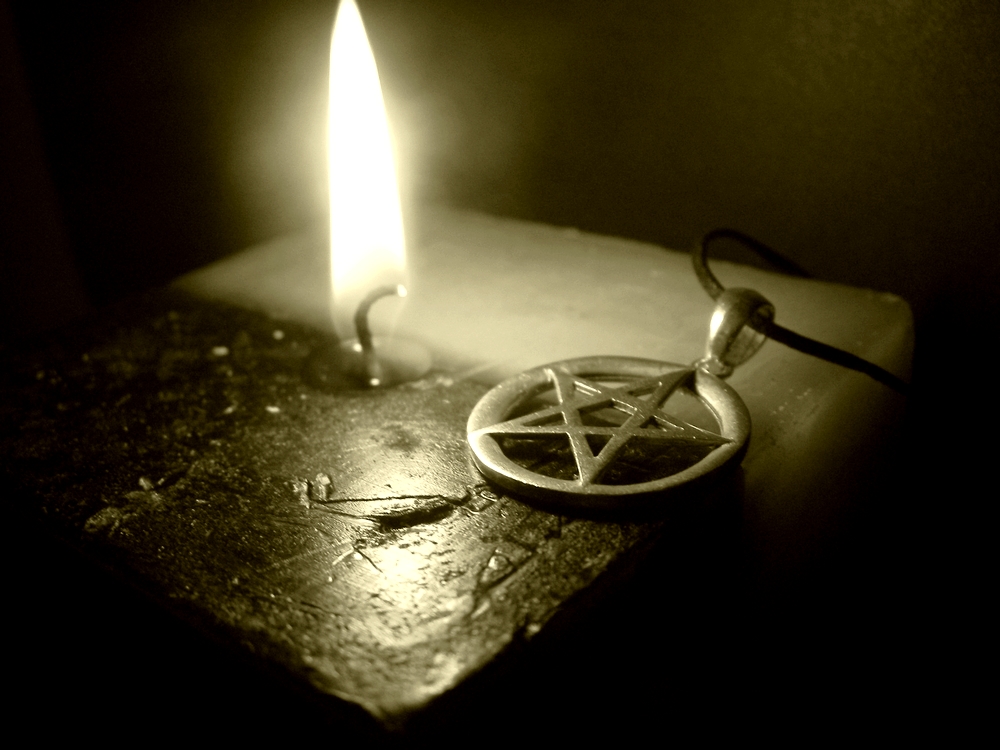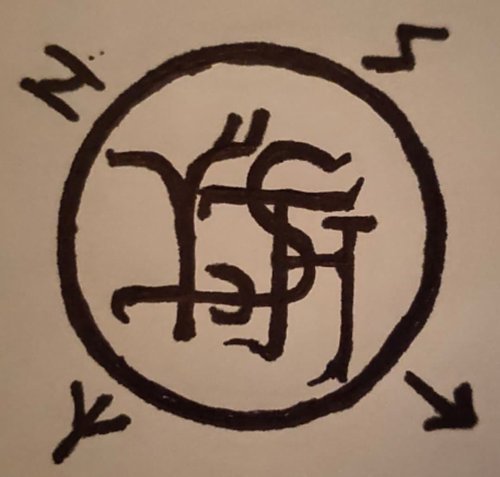Style
What is Chaos Magick
Chaos magic is not about disorder, as the name might imply, but rather focuses on order that is beyond conscious understanding. It combines elements of Eastern mysticism and Western ritual magic. The practitioner summons power from deep within the subconscious rather than calling upon the power of outside agencies. Ritual is used to evoke images from the subconscious and to release magical power.
Chaos magic differs from other occult traditions such as Thelema or Wicca in that it rejects the existence of absolute truth, and views all occult systems as arbitrary symbol-systems that are only effective because of the belief of the practitioner. Chaos magic thus takes an explicitly agnostic position on whether or not magic exists as a supernatural force, with many chaos magicians expressing their acceptance of a psychological model as one possible explanation.
The beginning of Chaos Magic
Chaos magic developed in the 1960s that dispenses with the pomp and ceremony of ritual magic and evocation of gods and spirits. AUSTIN OSMAN SPARE is considered the “father” of chaos magic for his emphasis on the power of the subconscious mind and his system of SIGILS.
Chaos magic grew out of the desire to strip away all of these extraneous elements, leaving behind only the techniques for affecting change; hence the emphasis is on actually doing things – i.e., experimenting with different techniques, rather than memorising complex rules, symbols and correspondences – and then retaining those techniques that appear to produce results. It is unknown when the term “chaos magic” first emerged, with the earliest texts on the subject referring only to “magic” or “the magical art” in general. Furthermore, they often claimed to state principles universal to magic, as opposed to a new specific style or tradition, describing their innovations as efforts to rid magic of superstitious and religious ideas.
Ray Sherwin developed chaos magic theory and early rituals. With Julian Carroll, Sherwin formed a “Circle of Chaos” for interested practitioners in England.
The word chaos was first used in connection with magic by Peter J. Carroll in Liber Null & Psychonaut (1978), where it is described as “the ‘thing’ responsible for the origin and continued action of events.” Peter J. Carroll was a leader in the formation of the Initiates of Thanateros in 1977, the primary chaos magic organization. Liber Null—half of which is devoted to the black arts, a “natural inclination” of humans—teaches that magical abilities are attained through altered states of consciousness, which can be learned “without any symbolic system except reality itself.” Psychonaut is intended for group magic and shamanic practice.
Unique to Chaos Magic
Chaos magic is hard to define because it is an idea rather than a set of rules for magical practice. The core of chaos magic is that the practitioner is free to adopt whatever works for them. This understanding comes from the perspective that it is not necessarily the ritual or path itself that has any inherent magical qualities, but the practitioner themselves.
Since chaos magic is built around an experimental, D.I.Y. approach that involves stripping all magical techniques down to their barest essence, any practice from any magical tradition can be incorporated under the banner of chaos magic: from Satanic ritual, to Wiccan sabbats, to energy healing, to Tantric practices, etc. However, there are a few techniques that have been specifically developed by chaos magicians, and are unique to the tradition.
Gnostic state Most chaos magic techniques involve something called the gnostic state, or gnosis. This is described as an altered state of consciousness in which a person’s mind is focused on only one point, thought, or goal and all other thoughts are thrust out. The gnostic state is used to bypass the “filter” of the conscious mind – something thought to be necessary for working most forms of magic. Since it takes years of training to master this sort of Zen-like meditative ability, chaos magicians employ a variety of other ways to attain a “brief ‘no-mind’ state” in which to work magic.
Three main types of gnosis are described: Inhibitory gnosis is a form of deep meditation into a trance state of mind. This type of gnosis uses slow and regular breathing techniques, absent thought processes, progressive muscle relaxation, self-induction and self-hypnosistechniques. Means employed may also include fasting, sensory deprivation and hypnotic or trance-inducing drugs. Ecstatic gnosis describes a mindlessness reached through intense arousal. It is aimed to be reached through sexual excitation, intense emotions, flagellation, dance, drumming, chanting, sensory overload, hyperventilation and the use of disinhibitory or hallucinogenic drugs. Indifferent vacuity was described by Phil Hine and Jan Fries as a third method. Here the intended spell is cast parenthetically, so it does not raise much thought to suppress – “doodling sigils while listening to a talk which is boring, but you have to take notes on”, for example.
Sigils They are most commonly created by writing out the intention, then condensing the letters of the statement down to form a sort of monogram. The chaos magician then uses the gnostic state to “launch” or “charge” the sigil – essentially bypassing the conscious mind to implant the desire in the unconscious.
To quote Ray Sherwin: The magician acknowledges a desire, he lists the appropriate symbols and arranges them into an easily visualised glyph. Using any of the gnostic techniques he reifies the sigil and then, by force of will, hurls it into his subconscious from where the sigil can begin to work unencumbered by desire.(1)
After charging the sigil, it is considered necessary to repress all memory of it: there should be “a deliberate striving to forget it”, in Spare’s words.[14]
In modern chaos magic, when a complex of thoughts, desires and intentions gains such a level of sophistication that it appears to operate autonomously from the magician’s consciousness, as if it were an independent being, then such a complex is referred to as a servitor. When such a being becomes large enough that it exists independently of any one individual, as a form of “group mind”, then it is referred to as an egregore.
Gordon White developed the technique of shoaling, which involves launching a group of sigils for a set of related aims. For example, instead of sigilising for “money”, sigilising for a pay rise, new business clients, a promotion, influential new contacts, budget reallocation for your department, etc. – all of which help “shift the probability” towards the overall aim White also developed the technique of the robofish, which consists of including a sigil for something that the chaos magician knows will definitely happen, to “lead” the rest of the shoal.
Personalised Chaos Sigils to Help You

This is an original sigil created for the clients’ specific needs. No two sigils are ever the same.
Max from BWC creates unique and powerful Chaos Magic Sigils for many purposes – CLICK HERE
Chaos sigil for HEALTH
Chaos sigil for PROTECTION
Chaos sigil for MONEY
Chaos sigil for LOVE
LEARN MORE – RECOMMENDED BOOKS & AUTHORS IN CHAOS MAGICK
Peter J. Carroll’s Books
- Liber Null
- PsychonautNOTE: (published in one volume in 1987)
- Liber Kaos (1992)
- PsyberMagick: Advanced Ideas in Chaos Magick (1995)
Phil Hine’s Books
- Prime Chaos
- Condensed Chaos
- The Pseudonomicon
Other Chaos Training Books:





